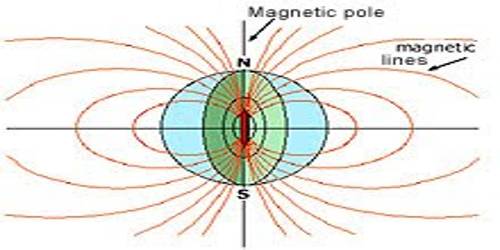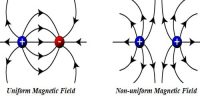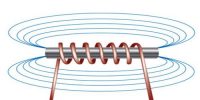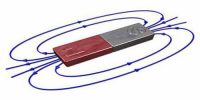Terrestrial Magnetism of Earth
In 1600, Dr. Gilbert, the house physician of Queen Elizabeth proved after many experiments that the earth is a magnet. It has poles like an ordinary magnet. The South Pole is in the north of Canada at Buthia peninsula and the North Pole is at Victoria region of the Antarctica continent. The branch of physics which deals with the magnetism of the earth and related different phenomena is called terrestrial magnetism.
The earth has two geographical poles. Its pole at its north end is called the geographical North Pole and that at the south end is called the geographical South Pole.
Since opposite poles attract each other, so north and south poles of a suspended magnetic needle or ordinary magnet rest towards the respective south, and north geomagnetic poles. For this reason, we normally say the South Pole of a geomagnetic magnet points towards the geographical North Pole and the geomagnetic North Pole points towards the geographical South Pole. But actually, geomagnetic South Pole is situated 2500 km west of the geographical North Pole and the geomagnetic North Pole is at 2202 km east of geographical South Pole.
The straight line joining the geographical north and south poles is called the geographical axis. Similarly, the straight line connecting the north and south geomagnetic poles is called terrestrial axis. The geographical axis makes an angle of 18° with the geomagnetic axis [Figure].
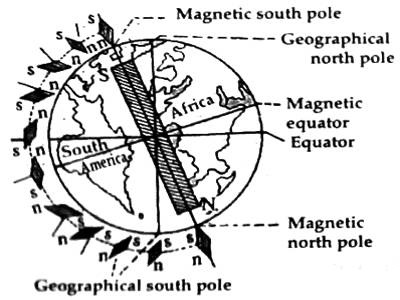
Again, since the north and south poles of a suspended magnet point towards respectively geographical north and south poles, the north pole of an ordinary magnet is called north-seeking pole and the South Pole is called the south-seeking pole. In short, they are respectively called the North Pole and the South Pole. Many people call the geomagnetic North Pole as the blue pole and the South Pole as the red pole. The strength and direction of the geomagnetic field are not same everywhere. They are different at different places. For this reason, if a small magnetic needle that rotates freely through the center of gravity is taken at different places of the earth, its magnetic axis will be inclined at different angles with the horizontal. It has been proved experimentally that if a magnetic needle is progressively taken towards the geographical North Pole, its north pole continues to incline towards the earth and at the geomagnetic North Pole its magnetic axis becomes fully vertical keeping the North Pole downward.
Conversely, if the magnetic needle is taken at the South Pole, the magnetic axis becomes vertical keeping the South Pole downward.
But at the equator and its surrounding places, the magnetic axis of the freely suspended magnetic needle remains almost horizontal.
